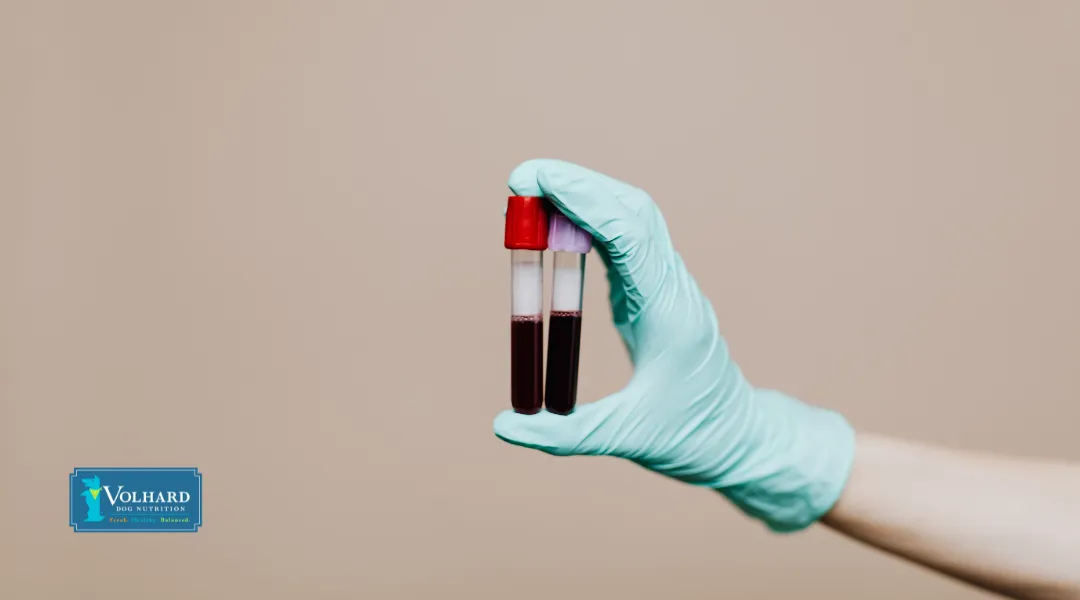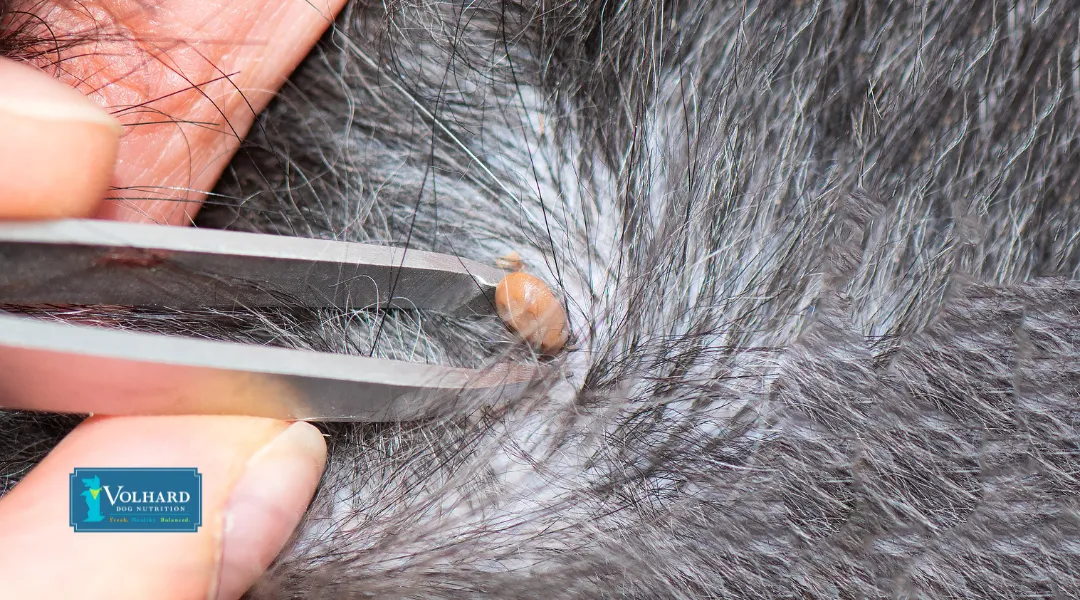Lyme disease, a significant concern for dog owners across the U.S., is a persistent threat, especially during tick season. This vector-borne illness, caused by the bacterium Borrelia burgdorferi, often remains hidden, with only a small percentage of infected dogs showing noticeable symptoms. While the primary treatment for active Lyme disease requires veterinary intervention and prescription medications, understanding supportive over-the-counter treatment for Lyme disease in dogs can play a crucial role in managing symptoms, bolstering recovery, and most importantly, preventing future infections. This guide aims to provide pet parents with comprehensive knowledge, from transmission and symptoms to professional treatments and effective OTC supportive measures, ensuring your canine companion stays healthy and thriving.
Understanding Lyme Disease in Dogs
Lyme disease is transmitted through the bite of infected black-legged ticks (Ixodes scapularis in the North and East, and Ixodes pacificus on the Pacific coast). These tiny parasites attach to a host and feed on blood, during which the Borrelia bacteria can transfer. Typically, the bacteria need 24-48 hours to pass from the tick to the dog and establish an infection. Besides Lyme disease, these ticks can also transmit other serious illnesses.
While not directly spread from dogs to humans through casual contact, both can be infected by ticks in the same environment. This underscores the importance of thorough tick prevention for the entire family.
Recognizing the Symptoms
Many dogs infected with Lyme disease never show symptoms. For those that do, common signs can include:
- Swelling of the joints
- Recurrent lameness, often shifting between different legs
- Limping
- Lethargy and decreased energy
- High fever
- Lack of appetite
- Walking stiffly or with an arched back
- Breathing difficulties
- Brain fog or altered mental state
- Phantom joint pain that seems to move throughout the body
Severe complications, such as glomerulonephritis (inflammation of the kidney’s blood vessels), can lead to life-threatening conditions like acute kidney failure. Regular monitoring and prompt veterinary attention are critical if any symptoms appear.
Diagnosing Lyme Disease
Diagnosing Lyme disease typically begins with a 4DX Snap Test, a quick blood test performed by your veterinarian that can detect Lyme, Heartworm, Ehrlichia, and Anaplasma. A positive 4DX result usually warrants further diagnostic tests like the C6 and CBC tests for more definitive confirmation. Early and regular testing, especially for dogs in tick-prone areas, allows for timely intervention before severe complications arise. We advise dog parents to get their dog proactively tested at least once every six months, particularly if not using chemical preventatives.
The Cornerstone of Lyme Disease Treatment: Veterinary Prescription Medication
When a dog is diagnosed with active Lyme disease, the cornerstone of treatment involves prescription antibiotics. Medications such as doxycycline, amoxicillin, clarithromycin, and azithromycin are commonly prescribed to combat the Borrelia burgdorferi bacteria. Doxycycline is often the antibiotic of choice for Lyme disease due to its effectiveness against the bacteria and its anti-inflammatory properties.
It’s crucial to understand that while these antibiotics can alleviate symptoms and target the infection, the Borrelia burgdorferi bacteria can sometimes survive treatment, leading to recurrent symptoms or new complications, including kidney disease. This highlights that simply giving antibiotics may not always result in a complete eradication of the disease, and a holistic approach including supportive care is often beneficial. Therefore, while antibiotics are essential for treating the infection itself, they are not available as over-the-counter treatment for Lyme disease in dogs. Any suspected case of Lyme disease requires immediate veterinary consultation for proper diagnosis and a prescribed treatment plan.
 Veterinarian examining blood samples for diagnosis
Veterinarian examining blood samples for diagnosis
Navigating Over-the-Counter Supportive Care for Dogs with Lyme Disease
While prescription antibiotics are necessary to target the bacterial infection, pet owners can provide significant supportive care using various over-the-counter (OTC) options to manage symptoms and bolster their dog’s recovery. These supportive over-the-counter treatment for Lyme disease in dogs should always be used in conjunction with and under the guidance of your veterinarian. They are not substitutes for prescribed medication but can greatly enhance your dog’s comfort and immune response.
Joint Support & Anti-Inflammatory Supplements
Lyme disease frequently manifests with joint pain, swelling, and lameness. OTC supplements can help mitigate these symptoms:
- Glucosamine, Chondroitin, and MSM: These are widely available joint supplements designed to support cartilage health, reduce inflammation, and improve joint lubrication. They can be very beneficial for dogs experiencing arthritis-like symptoms due to Lyme disease. Look for veterinary-specific formulations that ensure proper dosage and purity.
- Omega-3 Fatty Acids: Rich in EPA and DHA, omega-3 supplements, such as krill oil or fish oil, are powerful natural anti-inflammatory agents. They can significantly reduce joint inflammation and discomfort associated with Lyme disease, while also promoting skin and coat health. Consistent use can help manage chronic inflammation.
Important Caution: Never administer human over-the-counter pain relievers such as ibuprofen, naproxen, or acetaminophen to your dog without explicit veterinary instruction. These medications are highly toxic to dogs and can cause severe, life-threatening side effects, including kidney failure, liver damage, and gastrointestinal bleeding. Always consult your vet before giving any medication for pain.
Gut and Immune Health Boosters
A strong immune system and a healthy gut are paramount for fighting off infections and recovering from illness.
- Probiotics: A robust gut microbiome is the foundation of a healthy immune system. High-quality, dog-specific probiotics can help rebalance gut flora, which may be disrupted by antibiotic treatment, improve nutrient absorption, and fortify your dog’s natural defenses. Strains like Lactobacillus acidophilus and Bifidobacterium animalis are known for their immune-modulating benefits. If your dog experiences digestive upset or needs additional support, consider an otc diarrhea medicine for dogs after consulting your vet.
- Immune-Boosting Herbs: Certain herbs can offer gentle immune support. Echinacea is known for stimulating immune function, while Astragalus supports resilience against infections. Milk thistle can protect the liver, which works hard to process medications and clear infections. Always consult a holistic veterinarian or canine herbalist for appropriate dosages and forms, as the efficacy and safety of herbs depend heavily on these factors.
Nutritional Support
The foundation of overall health, and a critical component of supportive care, is a high-quality diet.
- A Fresh, Whole Food Diet: Feeding a balanced diet rich in lean proteins, fresh vegetables, and species-appropriate fats provides the essential nutrients needed to maintain a strong body and immune system. Dogs in optimal nutritional health are better equipped to fight off infections and recover from illnesses. This can also indirectly impact their susceptibility to parasites, as healthier dogs may be less attractive hosts.
 A dog being comforted by its owner
A dog being comforted by its owner
Preventing Lyme Disease: A Proactive and Holistic Approach
Prevention is undeniably the best strategy against Lyme disease. A multi-faceted approach combining veterinary preventatives with natural and home-based methods can significantly reduce your dog’s risk.
Professional Preventatives and Vaccines
Your veterinarian can recommend various options for tick prevention:
- Topical or Oral Flea and Tick Preventatives: Many effective, vet-prescribed products are available that repel or kill ticks before they can transmit disease. These are a crucial part of a comprehensive prevention plan. Considering the array of options, discussing the safest flea tick treatment for dogs with your vet is advisable. For households with multiple pets, understanding flea and tick treatment for cats and dogs is also important for integrated pest management.
- Lyme Disease Vaccine: For dogs in high-risk areas, a Lyme disease vaccine can be an effective component of a broader prevention strategy. The vaccine typically involves an initial two-dose series followed by annual boosters. While generally safe, mild side effects like soreness or fatigue can occur. Your veterinarian will assess your dog’s lifestyle, age, and health status to determine if vaccination is appropriate. It’s crucial to remember that the vaccine helps the immune system respond to the bacteria but does not guarantee complete immunity, making other prevention methods equally vital.
Natural and Home-Based Tick Prevention
Beyond vet-prescribed options, several home remedies can help deter ticks:
- Essential Oils: Certain essential oils can act as natural tick repellents. Rose geranium, with its strong scent, can disrupt a tick’s sense of smell. Cedar oil is a natural biochemical insecticide that dehydrates insect exoskeletons. Sprays containing lavender, peppermint, citronella, eucalyptus, catnip, lemon, lemongrass, rosemary, or basil are also commonly used to repel various pests, including ticks. Always dilute essential oils properly and consult your vet before applying them to your dog to ensure safety.
- Homeopathics (Ledum): Ledum is a homeopathic remedy often used for puncture wounds and insect bites, including tick bites. It’s believed to aid in blood purification and alleviate chronic conditions. A common recommendation is one homeopathic pellet of Ledum 200c twice daily for two days post-tick bite. Consult a holistic veterinarian for guidance on homeopathic treatments.
- Food-Grade Diatomaceous Earth: Made from ground fossils of single-celled algae, food-grade diatomaceous earth is rich in silica. It works as a dehydrating agent, effectively killing parasites like ticks by absorbing their moisture and oils. It’s generally safe for dogs and humans but lethal to insects. When applying, ensure it’s food-grade and avoid inhalation.
What to Do if Your Dog Gets Bitten by a Tick
Even with the best prevention, tick bites can still occur. If you find a tick on your dog, stay calm and act quickly. Rapid removal significantly reduces the chance of disease transmission, as the Borrelia bacterium needs 24-48 hours to pass into the host.
DIY Tick Removal
Gather the right tools before you start:
- Gloves (latex or rubber)
- Magnifying glass and a strong light source
- Tick removal tool (tweezers or a specialized tick remover)
- Disinfectant (e.g., 3% hydrogen peroxide, rubbing alcohol, or an antiseptic wipe)
- Small container with alcohol or a piece of tape to dispose of the tick
- Treats to reward your dog!
Procedure:
- Put on gloves.
- Use the tick removal tool or fine-tipped tweezers to grasp the tick as close to your dog’s skin as possible.
- Pull straight upward with steady, even pressure. Avoid twisting, squeezing, or jerking the tick, as this can leave mouthparts embedded or cause the tick to regurgitate infected fluids into your dog.
- Once removed, inspect the bite area to ensure no tick parts remain.
- Disinfect the bite area thoroughly. Three percent hydrogen peroxide can help eradicate Borrelia bacteria in its infancy due to its oxygen concentration.
- Dispose of the tick by placing it in a sealed container with alcohol, wrapping it tightly in tape, or flushing it down the toilet. Do not crush it with your fingers.
- Reward your dog for their cooperation.
Do not use methods like burning the tick, applying petroleum jelly, or essential oils directly to the tick while it’s attached. These methods can irritate the tick, causing it to release more fluids and potentially increasing the risk of disease transmission. However, peppermint essential oil and silica (diatomaceous earth) are known to encourage ticks to detach themselves once applied around them if conventional removal is difficult.
Post-Removal Vigilance and Veterinary Follow-up
After removing a tick, monitor the bite area for any signs of infection or irritation. Also, watch your dog for several weeks for any symptoms of Lyme disease, such as lameness, lethargy, or fever. Even if you remove the tick quickly, it’s always prudent to inform your veterinarian about the bite. They may recommend testing, especially if your dog develops symptoms, or if you live in a high-risk area for Lyme disease. Early detection and treatment are key to preventing serious health issues.
 Close-up of a person carefully tweezing off a tick from a dog's skin
Close-up of a person carefully tweezing off a tick from a dog's skin
Keep Your Dog Tick-Free and Thriving!
Managing Lyme disease in dogs requires a multifaceted approach that prioritizes prevention, prompt veterinary diagnosis and prescription treatment, and comprehensive over-the-counter treatment for Lyme disease in dogs to support healing and comfort. By understanding the risks, recognizing symptoms, diligently preventing tick bites through professional and natural means, and providing appropriate supportive care, you can significantly enhance your dog’s quality of life.
Remember, the information provided here is for educational purposes and should not replace professional veterinary advice. Always consult your veterinarian for an accurate diagnosis and a tailored treatment plan for your dog. For more insights into your dog’s health and nutrition, exploring topics like heartworm medicine or tablets for dogs with skin allergies can offer further valuable information. Your proactive care and attention are the best defense against Lyme disease, ensuring your loyal companion remains healthy and happy for years to come.
